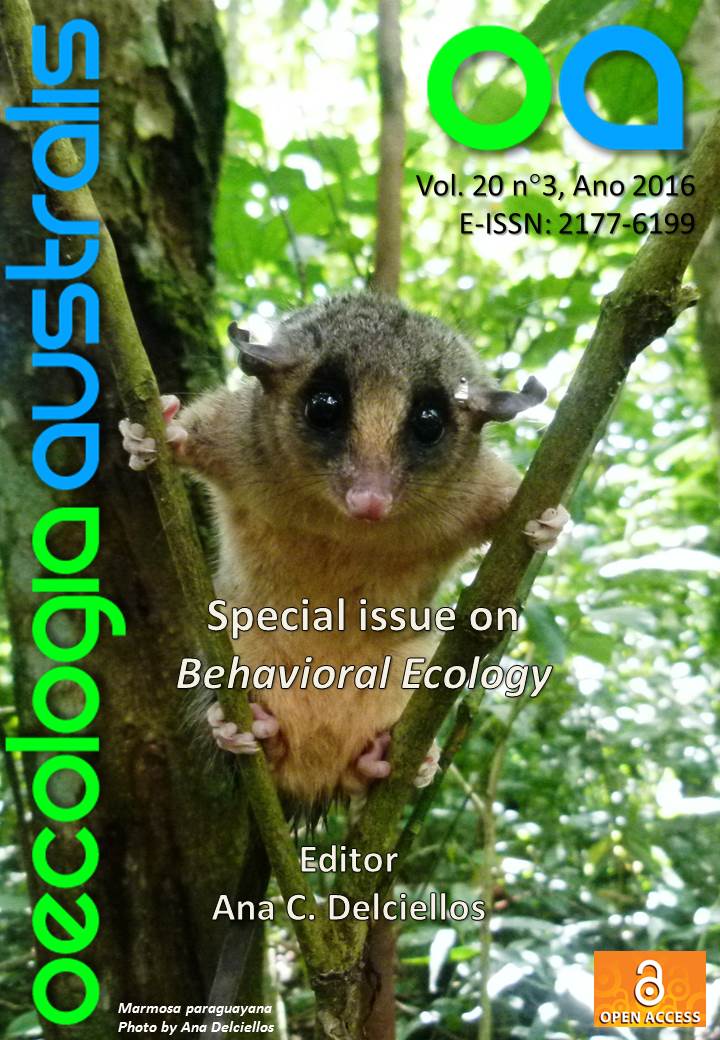PLASTICITY OF FORAGING BEHAVIOR IN LEAF-CUTTING ANTS
DOI:
https://doi.org/10.4257/oeco.2016.2003.02Keywords:
Attini, Estratégias de forrageamento, Flexibilidade comportamentalAbstract
The foraging behavior in social insects is a complex activity that involves a self-organizing system and can be studied at the individual or at the colony level. In the ant society, not all individuals participate in the gathering of food. The workers who perform this task are often older and larger ants. In Attini ants, the foraging is a complex process that involves selection, cutting and transport of food resources to the nest. These ants use several sources of food to develop the symbiotic fungus, which provides food to the colony. The genera Atta and Acromyrmex, known as leaf-cutter ant, have a well-defined pattern of foraging determined by physical and chemical trails. In the basal genera the worker ants forage alone, hardly ever cut fresh vegetation, do not follow trails and there is no fidelity to the resource gathered. Besides the differences between groups, foraging behavior may be different in the same specie as consequence of environmental factors and the adaptability of workers. Other phenomena that make the Attines an interesting model to study foraging behavior are the polymorphism and polyethism. Several studies carried in Atta species demonstrated the existence behavioral plasticity of foraging behavior of ants. In this context, this review analyzes the adaptability of leaf-cutter ants to solve problems fitting their behavior, both individually and collectively to adopt the most convenient strategy to exploit as society several sources of food.Downloads
Download data is not yet available.
Downloads
Additional Files
Published
2017-02-24
Issue
Section
Review


